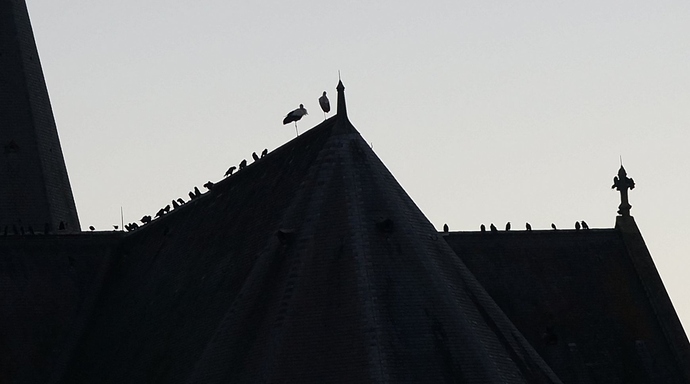France is a remarkably different country even if it is just over twenty miles across the channel. Even in the Ardennes region, with a climate similar to ours in England, we found different species of insects, invertebrates, birds and animals.
When we moved into our first house in Mouzon, we found a colony of Firebugs (Gendarmes) was huddled together out of reach (because of the high ceilings) in the bedroom. Later we discovered that the back wall of the out building was also covered in these bright red and black insects.
Small snails with light brown shells and spiral markings in white and brown, probably Cepaea vindobonensis, are a common sight. On one occasion I saw an enormous snail with a light grey body making its way across a road, which must have measured six inches from head to tail.
We always look out for the buzzards (les buses) when we go across country to our GP. On one occasion, I was travelling in the car parallel to a buzzard coming in for the kill. As the prey was close to the road, I got a very close view of the bird, which turned its back on me and flew off, preventing me from seeing his dinner.
On motorway journeys, we often see several birds of prey simply perched on fence posts along the side of the road.
A couple of storks (le cicogne) caused a stir when they settled on the roof of our local church. (see photo).
Wildlife appears to be more abundant in France, which means you are more likely to see animals than in the UK. Early one morning, I came virtually face to face with a red deer (le cerf) with a female (la biche). He looked at me for a split second before trying to bolt across the road – trying because he had no grip at all and slipped in every direction. The female ran straight into the wood.
The Ardennes is famous for its wild boar whose population has exploded in the past ten years. The local hunters take their responsibility for trying to control the numbers very seriously indeed. The countryside is sparsely populated and for this reason, friction between hunters and the rest of the population is rare. Wild boars can be dangerous so I was quite pleased to see two of them running down the side of the road at dusk from the safety of a car.
Our factory is on an island on the river Meuse. In broad daylight, I saw a muskrat (le musqué) on the river bank briefly before it swam off down the river. On the other side of the island, beavers (le castor) have built their trademark home although I have not yet seen a beaver. Similar to the beaver but without the tail are the coypu (le ragondin) and apparently these are very common in the Meuse at Sedan. Some of our hunters have seen raccoons (le raton laveur) – an imported species, in the woods.
These examples come from the Ardennes – I wonder what experiences members of SFN have had – especially further south?

